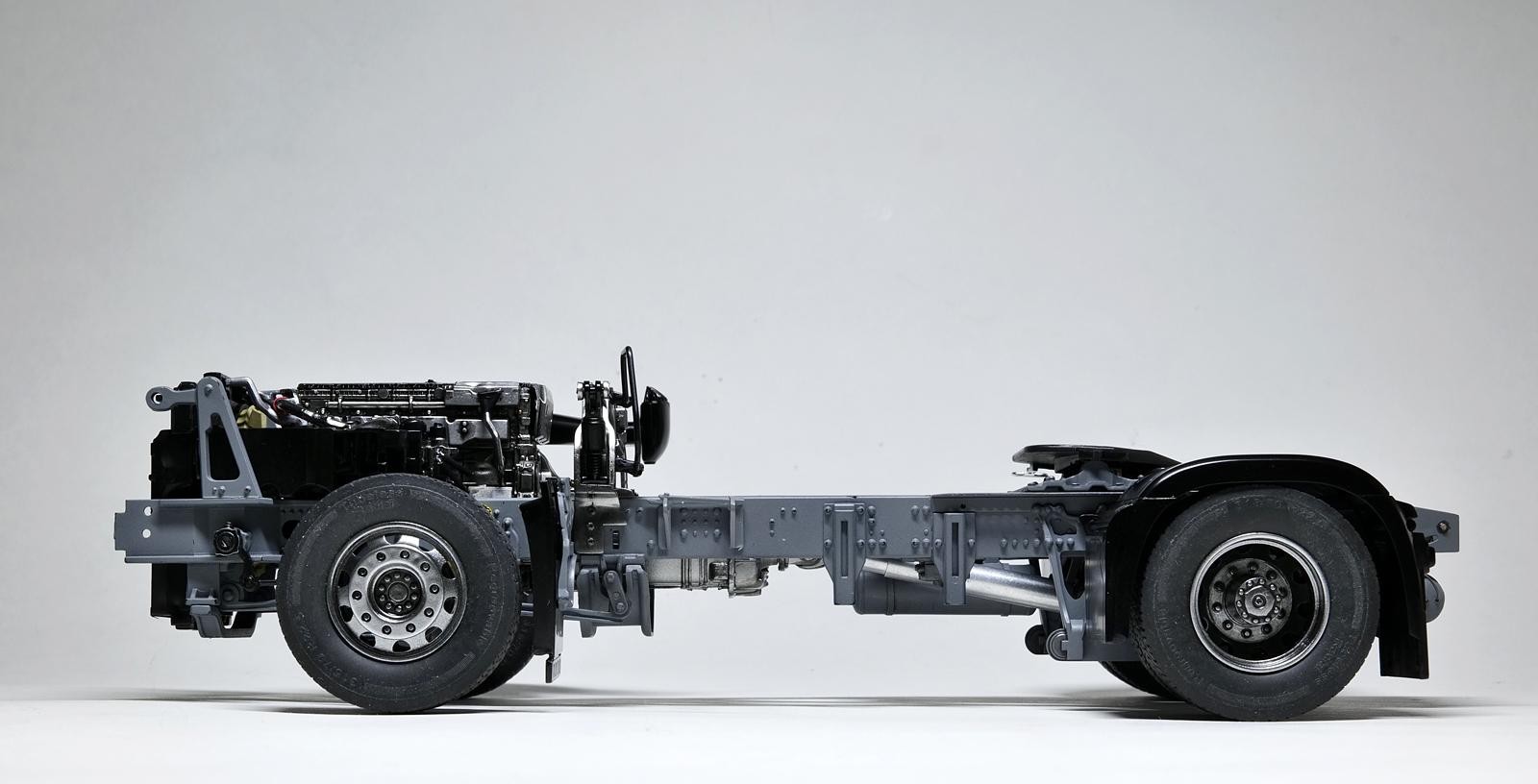Embarking on the construction of the Italeri Mercedes-benz Actros kit proved to be an engaging journey, blending moments of pure enjoyment with instances that truly tested modeling skills. Driven by the desire to rapidly complete a new project during the Christmas period, the build ultimately extended beyond a few days into a satisfying three-week endeavor. Staying largely true to the stock components, modifications were deliberately limited to avoid unnecessary complexity, with the exception of incorporating a Hobby Design Detail set to elevate the model’s overall visual appeal.
What stood out positively was the kit’s ability to materialize into a remarkably faithful and intricate replica of a modern Mercedes-Benz Actros truck. The assembly process was generally smooth and pleasurable, with the notable exception of navigating the multi-piece cab structure characteristic of Italeri kits. Furthermore, the 1/24 scale of the model culminates in a substantial and visually striking finished piece, a genuinely impressive achievement.
However, the kit also presented its share of challenges. It demands meticulous planning, particularly concerning painting and assembly sequencing, often necessitating the attachment of pre-painted elements to already painted body panels. Numerous sink marks required attention and cleanup, detracting slightly from the build flow. The static cab, lacking a tilting mechanism, prompted a modification to introduce this feature, adding complexity to the project.
Despite these minor frustrations, the Italeri Mercedes-Benz Actros kit ultimately provided a stimulating modeling experience, pushing the builder to refine various skills. The desire to tackle this kit again, potentially achieving an even higher standard, is a testament to its engaging nature. Had the focus not been on implementing a functional tilting cab, the build could undoubtedly have been more streamlined and quicker.
The kit excels in its representation of the chassis and engine components, offering considerable detail straight from the box. Assembling these sections proved particularly rewarding and enjoyable.
The external features of the Mercedes-Benz Actros are faithfully captured in the kit. The proportions of the body and the overall stance of the model accurately reflect the real truck, requiring no corrective measures.
A significant drawback of the kit design is the fixed cab position. To showcase the engine details, the model must be assembled with the cab permanently open, a limitation for those preferring a closed configuration.
Modifying the kit to incorporate a tilting cab demanded some inventive construction techniques. While alternative, possibly more refined methods exist, the chosen approach successfully achieved the desired functionality.
The base color for the model was achieved by blending CLK Silver and Super Duralumin paints, resulting in a dynamic finish. This custom mixture yields a bright silver appearance in daylight, transitioning to a darker, metallic grey under nighttime lighting conditions. The subtle nuances of the metallic finish, particularly in low light, proved challenging to fully capture photographically.
To illustrate the scale of the Mercedes-Benz Actros model, a comparison was made with a U.S. COE truck model.
Despite the slight scale difference (1/24 vs. 1/25), the Actros model clearly asserts its substantial presence.
The upper grille section of the Mercedes-Benz Actros model is designed to be functional, allowing it to be opened.
The extent of the cab’s forward tilt is shown, limited to prevent paint damage to the front bumper area.
The Mercedes-Benz Actros’s front design, characterized by its imposing grille and aerodynamic fairings, is a particularly appealing aspect of the truck’s aesthetics.
Post-build, it became apparent that a wide array of aftermarket accessories are available to further enhance the Mercedes-Benz Actros model, expanding its customization potential.
Future builds will certainly incorporate elements like roof lights, ground effect lighting, and a tinted windshield for added realism and visual impact. The side exhaust modification seen on some Actros trucks is also a desirable and achievable customization.
The Hobby Design Detail set included metal transfers for emblems, significantly improving the model’s fine detailing and adding a touch of realism.
Beyond the detail set, additional cabling and hoses were added, further enhancing the realism, building upon the kit’s already comprehensive component representation.
Although not included in this build to maintain the “quick build” objective, the addition of air supply hoses and electrical cords for trailer connections would further enhance the model’s authenticity.
In conclusion, the Italeri Mercedes-Benz Actros kit offers a genuinely enjoyable and rewarding modeling experience. The anticipation of building another Italeri kit in the future is high, reflecting the overall positive impression left by this project.
